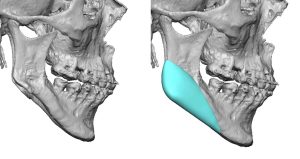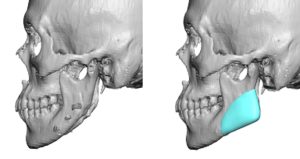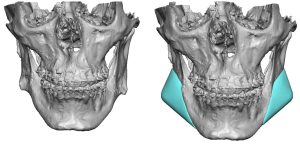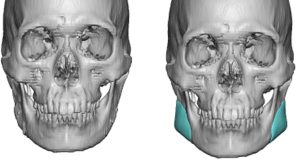Of all the common sites of aesthetic facial implant augmentation, the jaw angles in my experience pose the greatest challenges. Not only getting the correct dimensional shape for each patient defies any conventional measurements but they are also the most difficult to accurately place in the correct position on the bone. Placing an implant through an incision deep in the back recesses of the mouth where the working end of the implant is not visible once placed is why they have a significant risk of implant malpositon and asymmetry.
One of the common reasons for jaw angle implant asymmetry is that the patient had underlying jaw bone asymmetry initially. Covered up by the thick masseter muscle and subcutaneous tissue cover modest amounts of jaw asymmetry may be easily overlooked or deemed of no aesthetic consequence. Then when the jaw angles are enlarged the jaw asymmetry becomes more obvious…and even becomes further magnified if the implants have asymmetrical positions on the bone.


Dr. Barry Eppley
Indianapolis, Indiana




